As a novice, I am curious as to why there are these two methods of planking. Is it to replicate a traditional ship-building technique or is it simply a model-building method?
Last edited:
 |
As a way to introduce our brass coins to the community, we will raffle off a free coin during the month of August. Follow link ABOVE for instructions for entering. |
 |
Greetings, there is no traditional double-plank method. The ships were built with single planks only, When the ship was built, it had frames instead of bulkheads used in the ship model kits. To save money, kit manufacturers are using fewest bulkheads to form the hull. It makes it difficult to lay the planks naturally. Therefore kit manufacturers provide double-plank where the first layer is thick planks to form the hull. The modeler can apply filler to those imperfections spots and sand it smooth to make a foundation for the second planks.As a novice, I am curious as to why there are these two methods of planking. Is it to replicate a traditional ship-building technique or is it simply a model-building method?
Is it to replicate a traditional ship-building technique or is it simply a model-building method?
Alan, the Bounty 1/48 from AL is a singe plank kit.If you wish to build a kit with single planking the offerings from Syren may work for you. There are no kits better out there. There may be other kit makers that offer single planking but I am not sure and am curious to know if there are any. Many kits (not all) use the wood mentioned above for the outer layer but they are not easy to taper and pre-shape and are often very grainy so do not look realistic.
Allan
Batavia's planking:There where ships that are build with double planking. An example was the VOC ship Batavia. So it is not always a model building thing. But it makes the planking of a model ship easier.
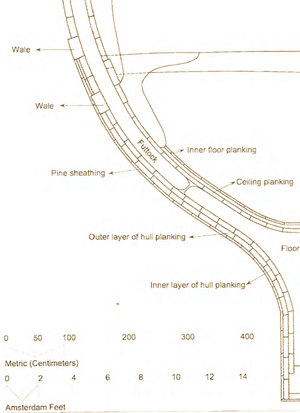
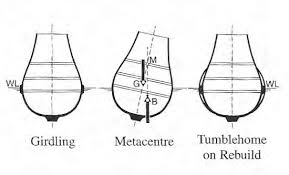

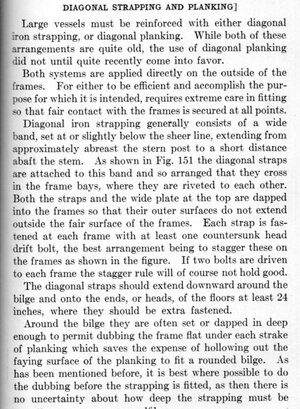
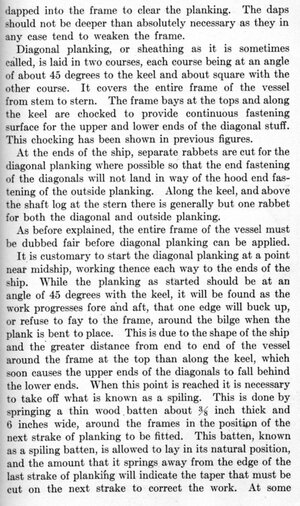
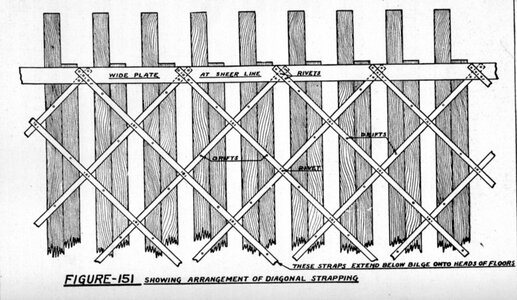
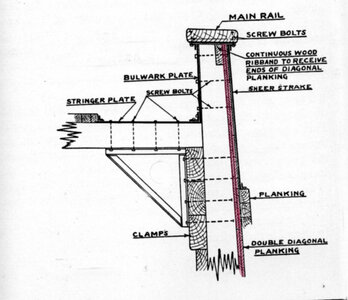
I was at the counter of Robbins timber (the UK's most extensive stockholder of hardwoods and marine ply for full size boats) and was irritated by people talking about "sapeelly". I worked in Nigeria and was a member of the Sapele country club. It is pronounced "Sappeli". As far as I know sapele timber is the closest you can get to mahogany (in the UK at least) which is as rare as hen's teeth these days thanks to forestry protection........... or (yuk) sapele.
Through ignorance I have been mispronouncing it until your informative correction. Thank you.I was at the counter of Robbins timber (the UK's most extensive stockholder of hardwoods and marine ply for full size boats) and was irritated by people talking about "sapeelly". I worked in Nigeria and was a member of the Sapele country club. It is pronounced "Sappeli". As far as I know sapele timber is the closest you can get to mahogany (in the UK at least) which is as rare as hen's teeth these days thanks to forestry protection.
As a novice, I am curious as to why there are these two methods of planking. Is it to replicate a traditional ship-building technique or is it simply a model-building method?
For plank on bulkhead models, the first layere of planking is to add strength to the hull. Also, it should be applied as a template for the the second, finish, layer. You can see where difficulties might be avoided and stealer planks are needed.As a novice, I am curious as to why there are these two methods of planking. Is it to replicate a traditional ship-building technique or is it simply a model-building method?

European kit manufacturers nearly always offer double-planked hulls. The inner (first) planking usually consists of economically sourced woods and an outer planking of 0.6 mm thin walnut veneer. The Europeans argue that this permits the model builder to cover mistakes made with the first planking and also to simulate many of the admiralty models found in European nautical museums. Why walnut veneer in museum models? Theory has it that the Admirals when deciding on ship construction and paint finishes rarely agreed. So, to avoid color the museum model builders chose a neutral finish .... walnut color. That's why most European kit manufacturers show photos of the finished model in walnut and include the strips in the kit. Personally, I cannot imagine why anyone would want to plank a hull twice.As a novice, I am curious as to why there are these two methods of planking. Is it to replicate a traditional ship-building technique or is it simply a model-building method?
ships with a wooden hull were not double planked
To give you an overview please take a look at a typical cross section
View attachment 448764
View attachment 448765Hail! I would like very much to know the source of your great illustrations. If it'a full document, can it be purchased somewhere? Thanks in advance.
Hi Mark.European example of double planking but Jim Roberts and Ben Lankford advised against it. Their argument? "Real ships were single-planked. Real ships did not have walnut finishes but were painted. A good model replicates the original ship and should be historically accurate." Made sense. Now all Model Shipways kits are single planked in basswood and are to be painted. Thank you for reading. Marc Mosko.
